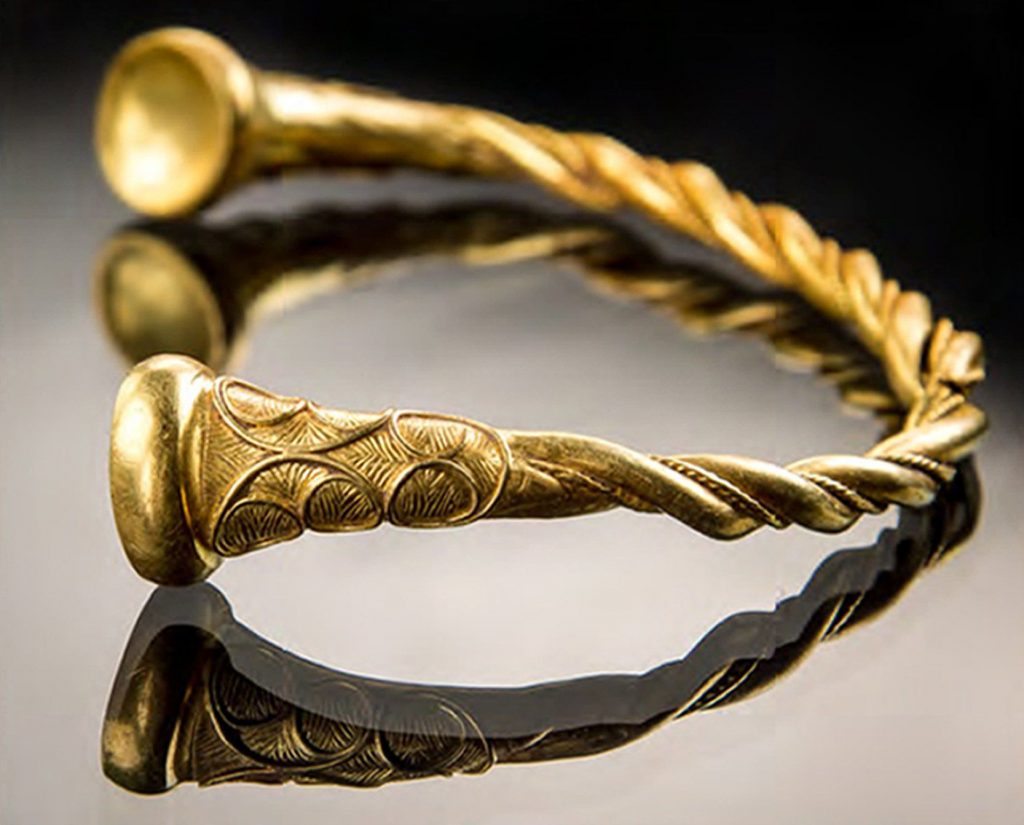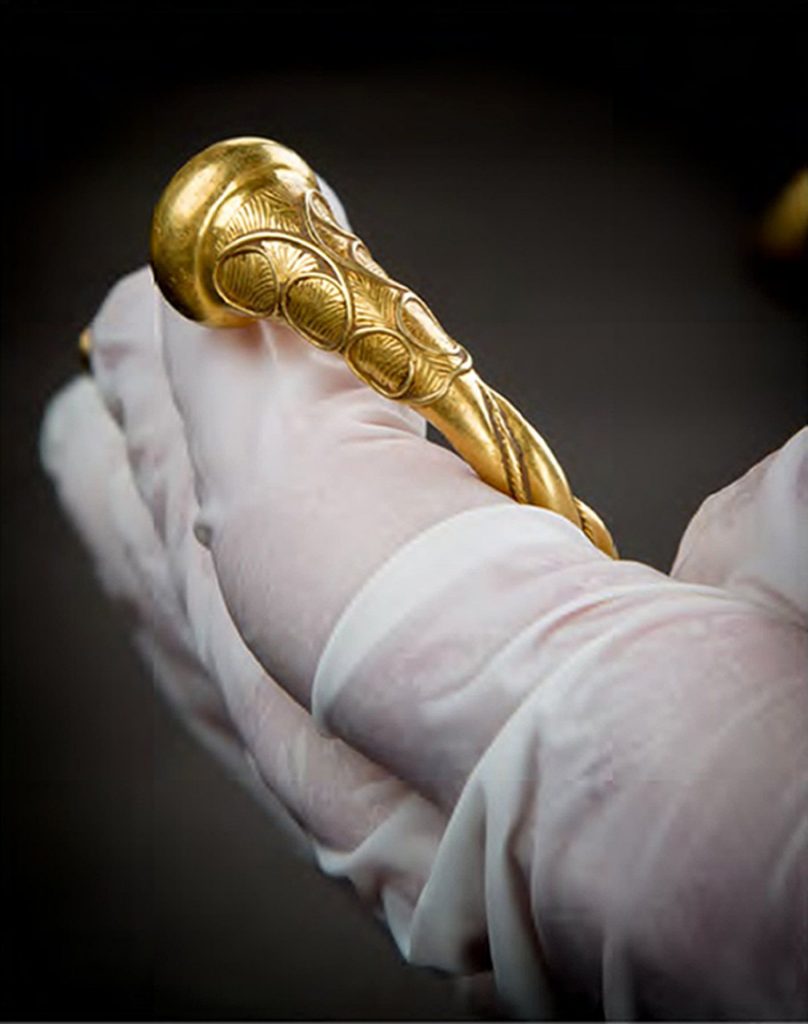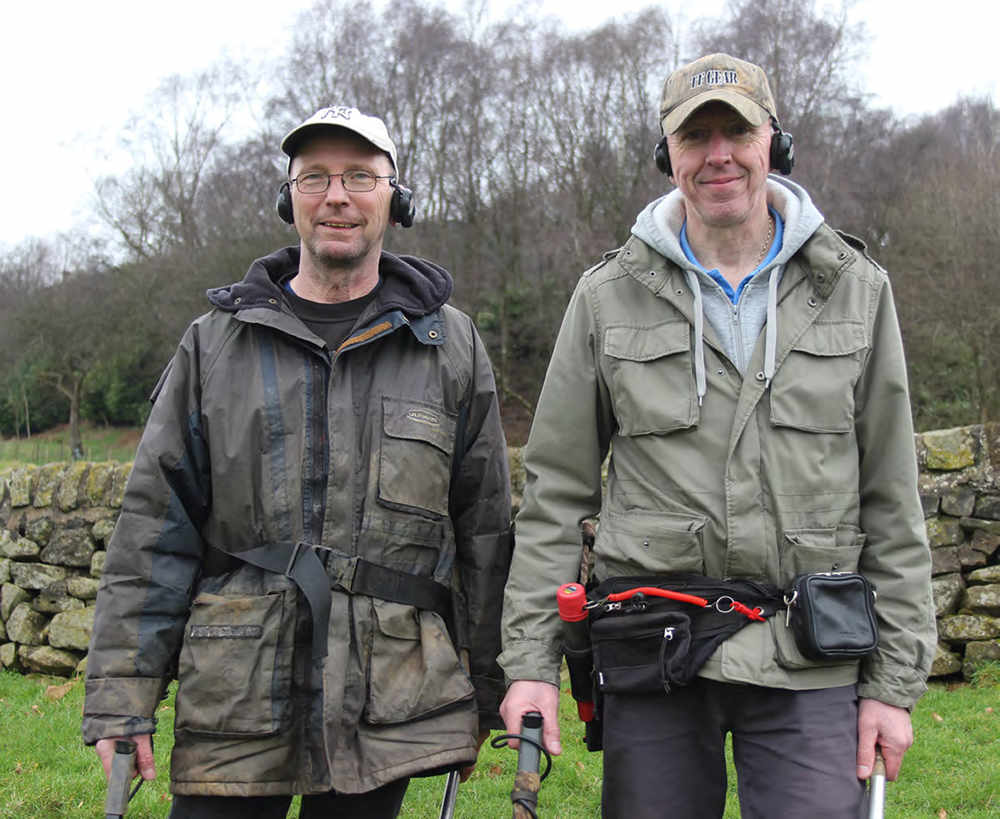“This must rank as one of the most exciting treasure finds I have ever dealt with – not quite in the same league as the Staffordshire Hoard, but nevertheless exciting.” – Ian Smith, treasure coroner with the British Museum.
Metal detectorist Mark Hambleton was exploring the rolling farmland of the Staffordshire Moorlands with his friend, Joe Kania, when they stumbled across a find so incredible that Mark kept it under his pillow the night before contacting the British authorities.
“When I’d got some air back into my lungs, my head had cleared and my legs had stopped wobbling, I said ‘do you realize what you’ve found there?” – Mark Hambleton.
Hambleton said that he was just about to give up and throw in the towel for the day when his friend showed him the discovery: a 2,500 year-old torc, or necklace, that would’ve been worn by an Anglo-Saxon noblewoman. The torc was found with several others, buried in a cow field.

PHOTO: metro.co.uk
When the pair found them, they were “speechless”.
The torcs are each about 2,500 years old, dating back to about 400-250 BC. The British Museum is calling it a find of “international importance”. They believe these pieces of jewelry are the earliest Iron Age gold work ever to be discovered in Britain.
Each torc had a gold content of at least 80%. The largest weight 8oz, and the smallest just 1oz. That’s a hefty monetary find.

PHOTO: metro.co.uk
The pair of metal detectorists plan to share the money they’ve earned from the find with the landowner, Stuart Heath. The jewelry has been taken into care by the Portable Antiquities Scheme, run by the Birmingham Museums. Currently, they’re on display at the Potteries Museum and Art Gallery in Stoke, England.
The British Museum gave the find a formal evaluation and labeled the jewelry formally as treasure. Artifacts categorized as treasure are at least 300 years old and have a precious metal content that exceeds 10% of their mass.
The treasure is now property of the British Crown, and is being looked after officially by the Treasure Valuation Committee. The committee is responsible for paying the finders, the landowner, and for finding a museum willing to pay to house and display it.
Archaeological teams working with the British Museum are planning on excavating further on Mr. Heath’s land to look for any more artifacts that might be buried and to get an idea as to why these torcs were buried.
Dr. Julia Farley of the British Museum said, “Piecing together how these objects came to be carefully buried in a Staffordshire field will give us an invaluable insight into life in Iron Age Britain.”


